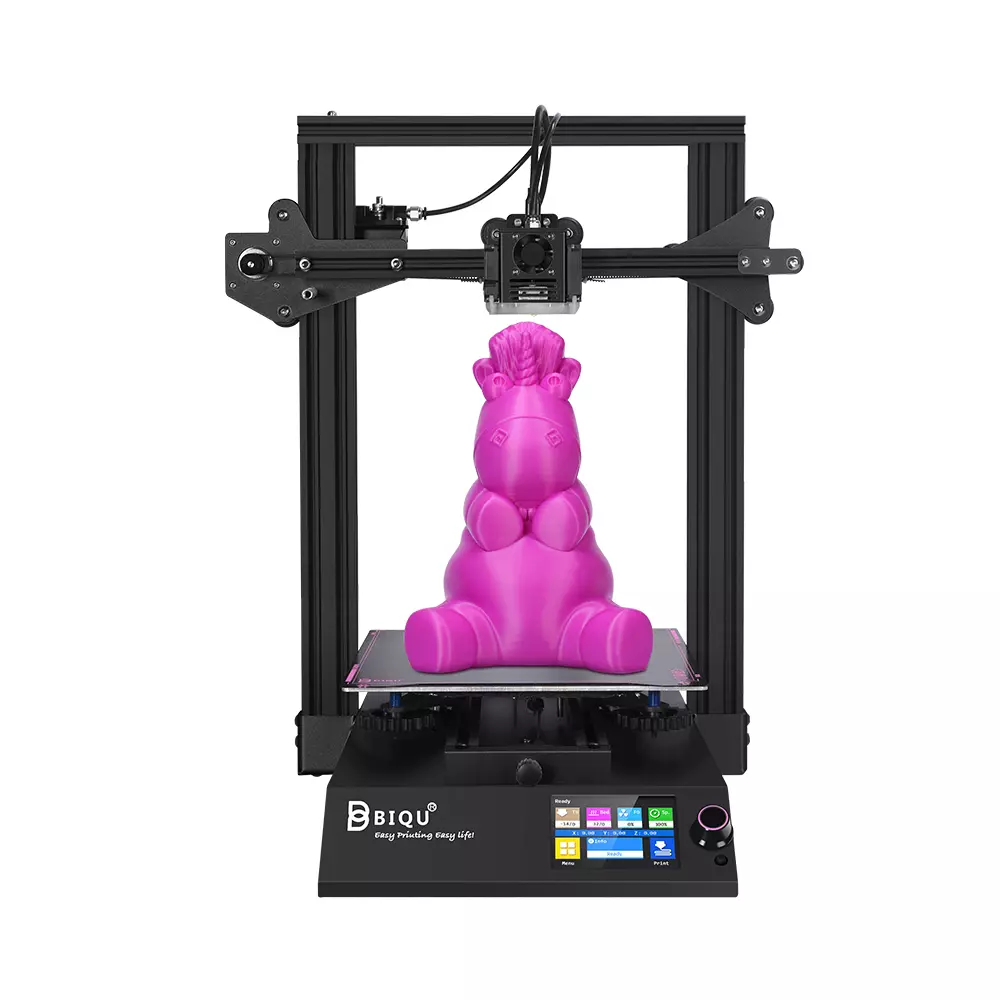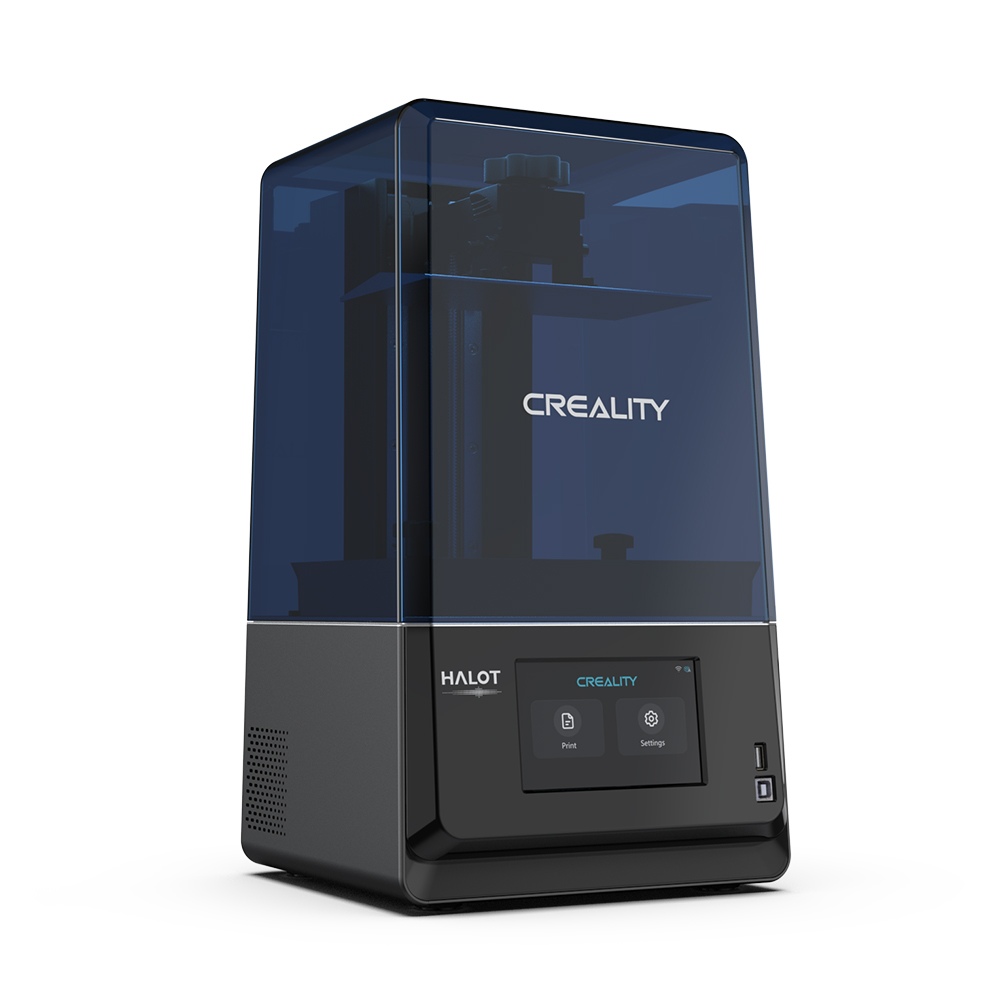Compare BIQU B1 vs Halot One Plus
Comparison between the best 3D printers
Choose the best 3D printer at the best price. The cheapest 3D printers are here.
Buy a 3D printer here with 3D Fila.
 |
 |
|
| Model | BIQU B1 |
Halot One Plus[BUY Halot One Plus] |
| Printing Material | Filament | Resin |
| Buy Filament for BigTreeTech BIQU B1 | Buy Resin forCreality 3D Halot One Plus | |
| Estimated price | $269,00 | $399,00 |
| Manufacturer | BigTreeTech | Creality 3D |
| Release Year | 2020 | 2022 |
| Print Volume [mm] | 235x235x270 | 102x172x160 |
| Printer Size [mm] | 412x402x492 | 236x245x416 |
| Weight [kg] | 8,00 | 6,8 |
| Power Loss Recovery | YES | NO |
| Maximum Resolution [mm] | 0,1 | |
| Processor | 32 Bits BTT SKR V 1.4 | |
| Display | Touchscreen TFT 3,5'' | |
| Power Supply | 24V / 360W | |
| Connectivity | SD / USB | USB / Wi-Fi |
| Operating systems | Windows, Mac, Linux | |
| Date of registration in the system | 2021-04-14 | 2022-10-11 |
| Release date | 2020 | 2022 |
| Extra features | The BIQU B1 is an advanced 3D printer with a silent 32-bit BTT SKR V1.4 motherboard and ARM Cortex-M3 CPU, offering DIY interfaces (I2C, SPI, WiFi) and dual Z-axis. Its dual BTT B1 TFT35 V3.0 operating system allows real-time monitoring and multiple printing modes, including G-code visualization effects. It stands out for its BIQU SSS (Super Spring Steel), ensuring easy model adhesion and simplified removal, with the possibility of using it on both sides. It includes a filament sensor, automatically pausing printing in case of filament breakage. The multicolored RGB lights integrated into the hotend allow you to view the printing status even at night. Additional notes include the need for a BIQU-specific Type-C cable and extra interfaces for smart filament sensor and BL Touch. | Crealitys Halot-One Plus printer stands out for its 4K+ resolution that delivers sharp details and consistent surfaces. It features a fast and responsive 5-inch LCD interface, as well as easy-to-use Halot Box software. It offers Wi-Fi connectivity and remote print monitoring, as well as an integrated air filtration unit, a rare feature in this price range. The Halot-One Plus is designed for the prosumer market, combining high quality with advanced features such as Wi-Fi and air filtration. During testing, it stood out for implementing these features at an affordable cost, while maintaining functionality. It features an attractive design with a UV-resistant blue cover and a robust dual rail system for the Z-axis, ensuring smooth and consistent movements. The large LCD and high resolution of the LCD mask (4320 x 2560) are other strong points, allowing for fine details and textures in prints. |
| Support for multiple colors and materials (AMS and CFS) | NO | NO |
Notes * |
||
| Cost-benefit | 7 / 10 | 8 / 10 |
| Hardware | 2 / 10 | 1.4 / 10 |
| Tela | . | . |
| Print volume | 3 / 10 | 3 / 10 |
| Performance | 1 / 10 | 9 / 10 |
| [BUY Halot One Plus] |
Conclusion |
| In comparing the BIQU B1 and Halot One Plus 3D printers, both models cater to different segments of the 3D printing market, each with their strengths and weaknesses. The BIQU B1 emerges as a budget-friendly option, offering a larger print volume, robust build quality, and a range of features such as power loss recovery, a touchscreen interface, and advanced hardware support through its 32-bit motherboard. The ability to monitor and control prints in real-time and the design that facilitates easy filament management contribute positively to its overall value proposition. However, its performance metrics suggest it may not deliver the same level of precision and quality as some more advanced models. In contrast, the Halot One Plus, while priced higher, delivers impressive performance characterized by its 4K+ resolution, which enables fine details and smoother surfaces in prints. Its advanced features—including Wi-Fi connectivity, remote monitoring, and an integrated air filtration system—make it appealing to prosumers looking for high-quality results without compromising on functionality. Furthermore, the user interface is intuitive and aids in easy operation, enhancing user experience. Although the BIQU B1 has more favorable ratings in areas like cost-benefit and hardware features, the Halot One Plus excels in print quality and advanced functionality. Ultimately, your choice will depend on your priorities: if you seek value for money and versatility in a larger build size, the BIQU B1 might be the right fit. On the other hand, if you prioritize print quality and advanced features for detailed projects, the Halot One Plus justifies its higher price with exceptional performance. Thus, both printers are compelling in their own right, and the decision hinges on the specific needs and budget of the user. |

